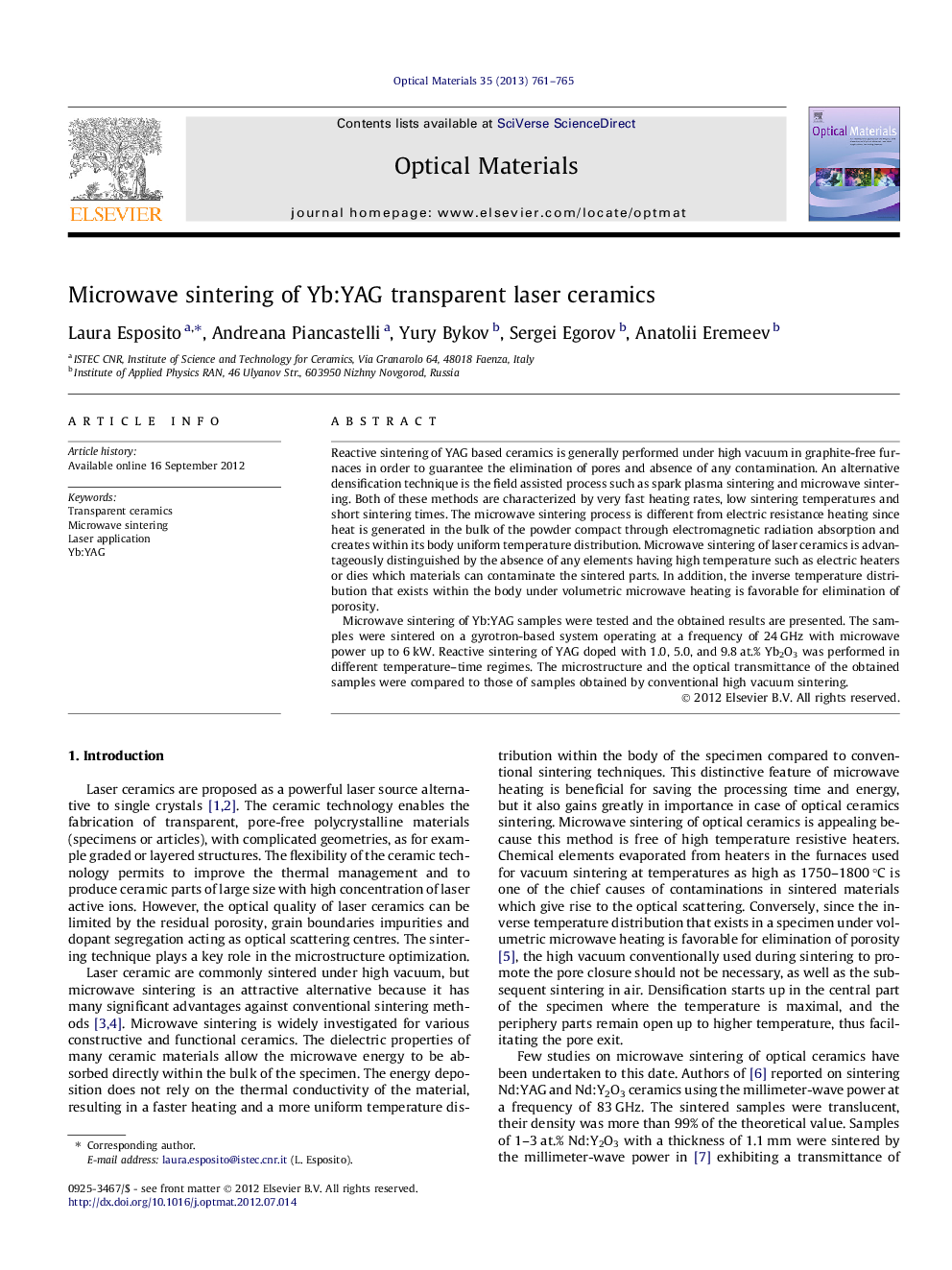| Article ID | Journal | Published Year | Pages | File Type |
|---|---|---|---|---|
| 1495586 | Optical Materials | 2013 | 5 Pages |
Reactive sintering of YAG based ceramics is generally performed under high vacuum in graphite-free furnaces in order to guarantee the elimination of pores and absence of any contamination. An alternative densification technique is the field assisted process such as spark plasma sintering and microwave sintering. Both of these methods are characterized by very fast heating rates, low sintering temperatures and short sintering times. The microwave sintering process is different from electric resistance heating since heat is generated in the bulk of the powder compact through electromagnetic radiation absorption and creates within its body uniform temperature distribution. Microwave sintering of laser ceramics is advantageously distinguished by the absence of any elements having high temperature such as electric heaters or dies which materials can contaminate the sintered parts. In addition, the inverse temperature distribution that exists within the body under volumetric microwave heating is favorable for elimination of porosity.Microwave sintering of Yb:YAG samples were tested and the obtained results are presented. The samples were sintered on a gyrotron-based system operating at a frequency of 24 GHz with microwave power up to 6 kW. Reactive sintering of YAG doped with 1.0, 5.0, and 9.8 at.% Yb2O3 was performed in different temperature–time regimes. The microstructure and the optical transmittance of the obtained samples were compared to those of samples obtained by conventional high vacuum sintering.
Graphical abstractDependence of microwave power required to maintain a given temperature–time schedule of heating during microwave heating of Yb:YAG ceramic. Optical picture and typical Si-rich triple point of a sintered component..Figure optionsDownload full-size imageDownload high-quality image (173 K)Download as PowerPoint slideHighlights► Fully dense transparent YAG-based ceramics were obtained by microwave sintering. ► Microwave sintering was performed in different temperature–time regimes. ► Samples were sintered on a gyrotron-based system operating at 24 GHz with microwave power up to 6 kW. ► Samples prepared with 0.5 wt.% TEOS had a transparency of 66% at 1100 of wavelength.
